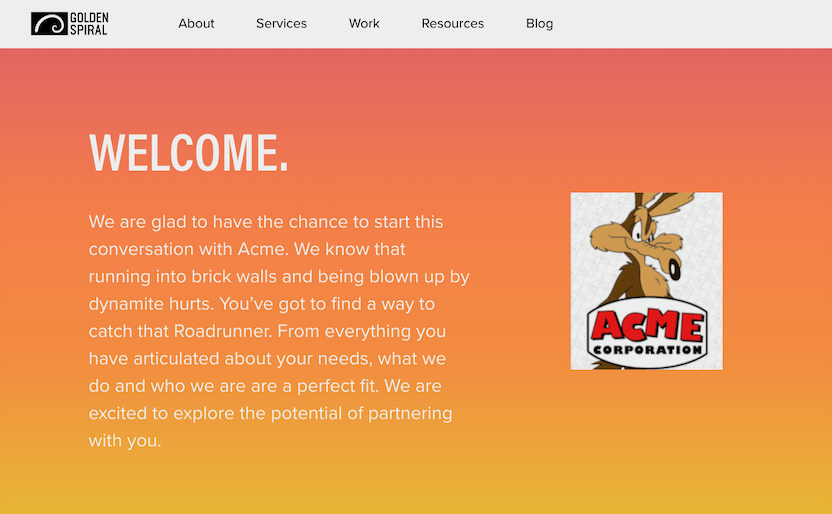Is Account-Based Marketing Effective in HealthTech?

Account-based marketing can be a great marketing tactic for HealthTech companies, but only when you integrate it into your comprehensive marketing strategy.
ABM is most powerful when you:
- Personalize your communication: The more you know about your targets, their pain, and how your solution specifically addresses their concerns, the more productive your ABM will be.
- Use ABM consistently and purposefully: This is no time for half measures or half-hearted attempts
- Capitalize on every engagement: When you take a direct address approach to represent your solution, you must make every connection count.
Think About This
87% of B2B marketers have agreed ABM delivers a higher ROI than other marketing activities. [ITSMA]
Individual stakeholders who perceived supplier content to be tailored to their specific needs were 40% more willing to buy from that supplier than stakeholders who didn’t. [CEB]
Companies that implement ABM have reported an 84% improvement in reputation and 74% improvement in customer relationships. [ITSMA]
What is Account-Based Marketing?
Account-based marketing targets companies and their decision-makers already in your sales pipeline with a focus on long-term relationships and retention. ABM requires a personalized approach and is best executed in tandem with your organization’s overall strategy.
-
- Who is your laser-focused target? You don’t just need a rough idea of your ideal customer. You need to know the exact type of targets you need and the companies they work for.
- What is your target’s role? By role, I don’t just mean title. How much influence do your targets exert in their organizations? How much are they listened to? Do they have a seat at the buyer’s table?
- What social and other channels does your target most frequent? LinkedIn is a given, but when done well, ABM can employ Twitter, Facebook, Instagram, and eventually direct text messages.
Remember, the better you can answer the questions above, the more you’ll be able to personalize the content you send. Personalize every communication. The more personal the communication, the deeper impact you’ll make.
ABM Examples
The best healthcare example we’ve ever seen was facilitated by Nick Runyon’s team at PFL. Their client targeted surgeons. So, with PFL’s help, they created a life-like synthetic skin. They mailed it to the target surgeons. When a surgeon would open the box, he’d be confronted by the skin and an injury needing sutures. Enter the vendor. Included in the package were the surgical tools and the suture material available for sale by the company. Nick tells the story beginning at 23:26 of our podcast episode with him.
GumGum created a number of brand experiences for the Clorox family of companies as a means to introduce their services. At Clorox’s annual iConnect conference, GumGum’s augmented reality temporary tattoos became the rage. More than 200 attendees downloaded their app and transferred a tattoo. That opened up more than 200 discussions about GumGum’s emerging computer vision technology.

ABM with Excellence
Now that you’ve made an initial connection, what’s next?
What do you want your target to do with your communication?
Perhaps with your first email or phone call, there is no call-to-action. There is no need for your target to do anything. If you’re identifying your target’s needs and pain points, you are demonstrating empathy. You’re gaining trust already.
With subsequent outreaches, decide in advance how you want your target to interact with you.
If you choose to use a landing page or another response mechanism on your website, personalize it as much as possible. From time to time, we have cloned the landing page of our downloads to include target-specific content and information.

We experienced some great examples of ABM after attending HubSpot’s 2019 INBOUND conference. Our team member, Irma Davila, visited a trade show experience created by Sendoso, a third-party gift and corporate specialties delivery service. While at INBOUND, the team invited her to play a game at their booth. She did (and did well from what we hear). Sendoso got her contact information; she got a free cup of coffee and a prize. She walked away from the booth feeling happy and caffeinated. Then, a couple days after returning to the office, a sharable box of Georgetown Cupcakes arrived reminding us of their service and showing us first-hand how powerful corporate gifts can be as a part of trade show follow-up.
Do you think we will remember them? Do you think they will be top of mind the next time we consider sending gifts to our clients and targets?
The Paradox of ABM
The less focused you are on the sale, the more trust you can build.
Your job is to close deals and grow revenue, but the more you try to do those two things on the nose, the more targets you will repel.
A sale is a natural byproduct of the relationship you’ve built. You have to be in love with your customer, not your product. If they feel valued, then making the sale is not a burden or a manipulation; it’s a service provided by a trusted colleague.
Moving A Target Closer to a Sale
ABM is slow by design. You are building a relationship for years to come, not a one-off sale for this week’s scorecard.
Watch for opportunities to assert your expertise:
- You discover your target’s company will be attending a trade show for the first time. On the other hand, you have been exhibiting at trade shows for years. Set up a time with your target to discuss maximizing their experience. You’ll demonstrate your knowledge and help them at the same time.
- Your target posts something on social media. Your company published a white paper that addresses the concern. It’s the right moment to send it to him. You are meeting an acute need at the right time with your company’s expertise.
- You have an upcoming webinar. You know your target can address that topic well. Invite your target to address your webinar audience as a co-presenter. While your target is with your audience, they will hear your expertise while at the same time feeling honored to be part of the experience.
- If your target hasn’t taken a demo of your solution yet, set up an appointment to personally walk them through your product.

When is it Right to Ask for the Sale Using ABM?
The right time to have a sales conversation will be different for each target. There is no formula because there can’t be one when building a long-term relationship. If you’re building rapport and gaining trust, your target will let you in on the challenges your organization can help with.
Here are a few diagnostic questions to ask along the way to help you determine the right time for a sales conversation:
-
- Does your company operate on a calendar or fiscal year basis? This information demonstrates a pressure point. Either your target has to solve a problem by the end of the fiscal year OR there will be new funds allocated at the beginning of the next.
- What are the top goals you are pursuing for this quarter? Your product might solve one of those top goals. This question also gives you a deadline and may reveal financial assets poised to meet the goal.
- When your company makes decisions on new software solutions, what is their process? This helps identify how many roles are in the decision-making process.
There’s another factor in ABM—the 800-pound gorilla in the room. Let’s not pretend your target doesn’t know why you’re building a relationship. Everyone knows you’re trying to get a deal.
At some point, it might be worth just saying “We both know that I connected because I believe our product is a great solution for your needs. We’re both in business. We both need to generate revenue. Has our solution intrigued you? Could we talk openly about how your company operates and how interested you are in making an investment?”
In a perfect world, account-based marketing techniques draw your targets to you and prompt them to ask you to sell to them. Just keep your affection for them and your desire to solve their problems at the forefront and the opportunities for sales should present themselves. ABM doesn’t take the place of your other marketing efforts to all customers and your one-to-many efforts. All three techniques can work in concert with one another when integrated into a strategy.
The First Thing to Do After Reading this Article
If you’re new to ABM: Pick five potential targets and put a specific ABM plan together to approach them. Do so, then evaluate your results. How well did ABM perform against other nurture methods?
If you’re already using ABM: Evaluate your last three approaches. How much did you offer for the target’s benefit versus talking about yourself? What can you change in your ABM approach?
Updated from August 8, 2019



